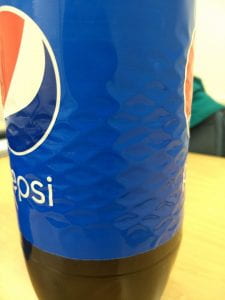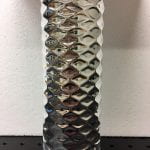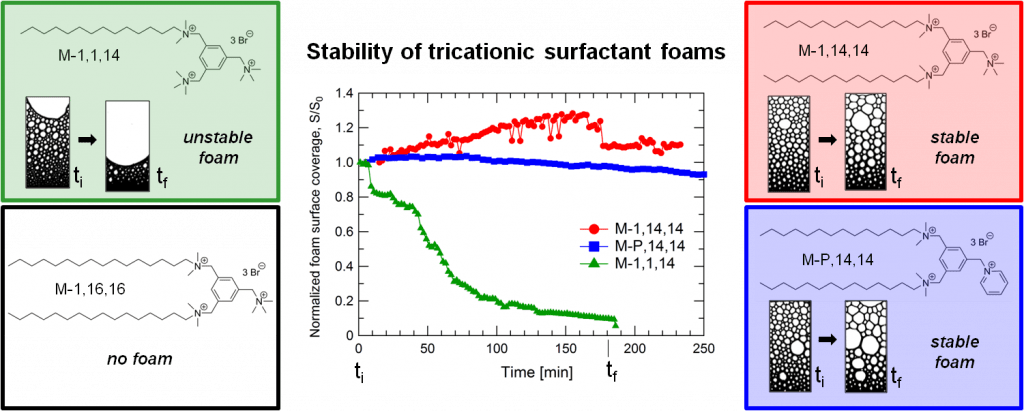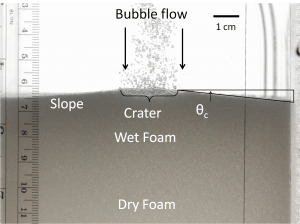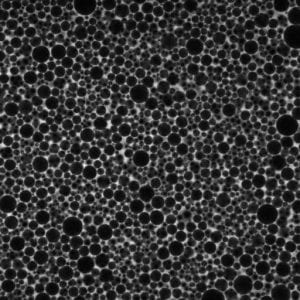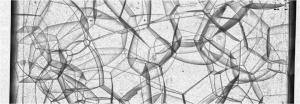Mechanics of thin sheets: Over the past 15 years the field of solid mechanics has experienced a radical paradigm shift focus on exploiting bending, buckling, and snapping—behaviors previously merely regarded as failure—to create smart materials with predictable, adaptable and desirable mechanical responses on demand. This new perspective has ushered in a research renaissance centered on understanding the interplay between geometry and elasticity for applications in flexible electronics, robotics, mechanical sensors, batteries, green energy devices, to name a few. These new developments have been powered by the confluence of ideas and collaboration between many disciplines, ranging from engineering mechanics, physics, chemistry, biology, materials science, architecture and even art.
Our investigation centers on the buckling modes of thin cylindrical sheets under compression. This process is controlled by the interplay between geometry and elasticity. Our experimental model consists of a cylindrical shell loosely wrapped around a rigid tube of smaller diameter. When a load is applied along the main axis, the shell wrinkles into a regular periodic pattern of delightful aesthetics. By carefully controlling the experimental parameters, and observing the formation of the wrinkles, we hope to understand how the pattern develops. At the same time, we are developing theoretical models and numerical simulations based on local curvature measurements to help predict the dynamics of pattern formation. One growing area of interest is to determine what happens when the thickness of the shell decreases. Our preliminary results suggests that the Gaussian curvature of the shell approaches zero as the thickness decrease. In the future we plan to explore interactions of the patterns with surrounding fluid.
This work is done in collaboration with the Dias group from Aarhus University, Denmark.
Rheology of foams – Take an ordinary solid, such as a common eraser, stretch it, bend it, or compress it, and the solid bounces right back to its original shape after the deformation. This elastic behavior is what characterizes solid as a state of matter. However, what happens if we compress or stretch a piece of amorphous soft material such as aqueous foam? Does the foam bounce back, deform, or both?
To answer these questions, we apply a periodic compression to a bubble raft and observe the response of the raft with high resolution image video. Under small stresses we find that the foam displays elastic behavior, but over a critical stress the raft undergoes permanent deformations characterized by sudden collective bubble rearrangements along slip lines separating semi-crystalline domains. We are currently characterizing the nature of the rearrangements, as well as their spatial and temporal correlation with the driving and local packing. The results will help elucidate how soft amorphous materials respond to stress.
Foams stabilized by complex surfactant molecules – Aqueous foams can be described as a close packing of gas bubbles stabilized by surface active molecules. Their complex and diverse properties make them attractive for many chemical and physical applications where foaming, emulsifying or coating processes are needed. The recent synthesis of multi-cephalic and multi-tailed amphiphilic molecules have reportedly enhanced their antibacterial activity in connection with tail length and nature of the head group, but little is known about their foaming properties.
We focused our studies on the foamability and stability of triple-head, double- and single-tailed amphiphiles, synthesized by the Caran group, from JMU Chemistry and Biochemistry dept. The amphiphiles are composed of an aromatic mesitylene core and three benzylic amonium bromide groups, with alkyl chains attached to one or two of the head groups. We found that while shorter (14 carbons in length) double-tailed molecules produce very stable foams, foams made with single tail molecules of the same length do not foam well and display reduced stability. Moreover, foams with longer (16 carbons in length) double-tail molecules do not foam with any of the methods used in the experiment. This fact shows that tail length has a major impact in foamability and stability of the surfactant. By contrast, the structure of the non-tail-bearing head group (trimethylammonium vs. pyridinium) shows no impact on foamability. Furthermore, observations of the coarsening rate at nearly constant liquid content indicate that the enhanced foam stability is a result of lower gas permeability through the surfactant monolayer. Finally, the critical aggregation concentration (CAC) of the surfactants demonstrates to be a good predictor of foamability and foam stability for these small molecule surfactants. This results inform how surfactant architecture can be tailored to produce stable foams.
Packing and structure of frictionless grains – Anyone who has ever walked over dry fluffy sand knows that sand dunes can never sustain a very steep slope. As one steps on the surface, compressing and dislodging the sand underneath, a small avalanche takes place bringing the slope back to the characteristic angle of repose. It is not hard to imagine that the angle of repose depends on the shape and friction of the gains: rough irregular grains would lead to steeper angles. So, what would happen if the dunes were made of perfectly spherical frictionless grains? Would there be any sand dune at all?
We explore this limit by studying the structure and formation of a bubble pile at an air-water interface. We find a gentle slope at the interface as the pile is forming. The slope is weakly dependent on the bubble flow rate, but vanishes when the flow ceases. Our current focus has been on the effect of confinement and fluid properties on the slope, as well as the crater formation upon bubble impact.
Glassy dynamics in dense emulsions – Open a Hellmann’s jar, look at the mayonnaise inside and you will immediately realize that despite its creamy texture, mayonnaise is not a liquid in the ordinary sense. In contrast with ordinary liquids like water or maple syrup, mayonnaise only flows when spread or squeezed. Other stuff inside your refrigerator such as cream cheese, yogurt, ice cream, ketchup, whipped cream, etc, behave the same way. How do these soft materials display such intriguing flow behavior? This is one of the mysteries of condensed matter physics.
It is widely regarded that the tight packing of oil droplets that make up the mayonnaise is at the heart of the complex flow. In our lab we use microfluidics, confocal microscopy, and rheo-optical measurements to investigate the structure and dynamics of a clear dense emulsion whose internal structure is very similar to that of mayonnaise. We are particularly interested in the formation of shear bands, regions where both moving and jammed droplets coexist. The goal is to identify changes in the packing and dynamics that facilitate the flow.
Structure of 3 dimensional dry foams – (in collaboration with the Durian group @ Penn). One of the most fascinating structures in nature is that of dry foam. The intricate packing of polyhedral bubbles is not only beautiful, but also worth careful investigation since it resembles many countless systems not only in physics, but also in chemistry, biology and even astronomy. Mathematicians have been captivated for ages by the problem of how to fill three dimensional space with unit cells of identical shape and minimum surface area. Dry foam may provide insight and inspiration, if not the correct answer to them. Foam, however, is generally opaque due to light scattering across many bubble films making the internal structure difficult to visualize. In collaboration with the Durian group at Penn, we have been working in a novel optical tomography technique to visualize the internal structure of dry foams and unveil its complex pattern.
Collaborative web page with Virginia Tech – Cheng group
Support

